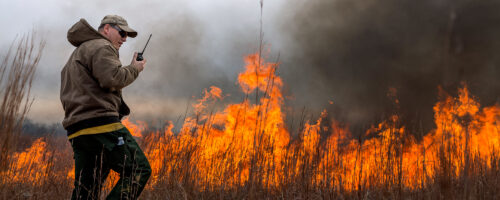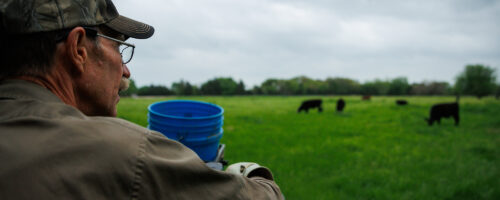New item for spring to-do list: Set up a monitoring site to measure regenerative progress on your ranch
It doesn’t take long to set up a transect or single site to benchmark and track improvements in soil and pasture health. Here are tips of what to monitor, record and use to reach your goals.
If you could increase the amount of productive land you operate by 30%, without an additional land payment or lease agreement, would you do so?
For most, the answer is a no-brainer.
Noble Research Institute Senior Regenerative Ranching Advisor Jim Johnson says it’s not uncommon to have pasture with 30% bare ground, which means the increase in land capacity you seek may already be right under your nose.
“If you’re able to work toward management principles that will help cover that 30%, you just earned 30% more acres to operate on for free,” Johnson says. The problem is, “most people don’t realize they’re giving up that much production.”
The best way to manage for more is to measure where you are now and where you want to go, he says.
The first step to achieving that objective may start with adding a simple, five-minute task to your spring to-do list: setting up monitoring sites or “transects” to establish a consistent location to observe and measure your land management progress.
A monitoring transect is a line between two marked points, along which you measure or take samples up and down the length of a tape measure stretched between the points. Marking a single-point monitoring location will do, also.
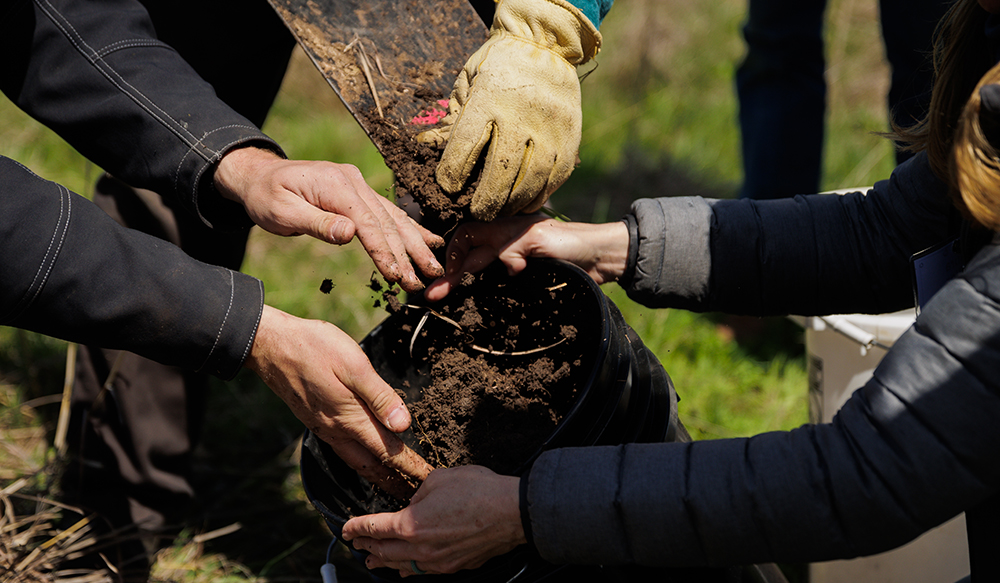
Where and when to monitor
Whether you set up a transect or stationary point, spring is an ideal time to establish the site, Johnson says.
The most important part is selecting the site itself. Ideally, the location will be representative of the ranch or the particular pasture. That may require more than one location. If you have upland and bottom ground, or introduced and native forages, or different soil types – you may want to select monitoring locations that represent those differences.
Make sure the location you select is not impacted by gates, fence lines, water tanks, livestock trails or other factors that would influence the area you’re monitoring. Consider other non-management impacts on the location – does it intermittently flood or have a pipeline running nearby?
“The key is to find a location where your management is the primary factor that has the ability to impact that land,” Johnson says.
Start by making some base observations and establish the frequency you’d like to monitor the location. Some want to record observations at the height of the cool growing season and the height of the warm growing season. Others may choose quarterly monitoring, with one for each season. Johnson says he’s satisfied with annual observations, “because a lot of these things we’re monitoring change very slowly.”
Set a reminder on your phone or note the monitoring dates on your calendar to keep you on track.
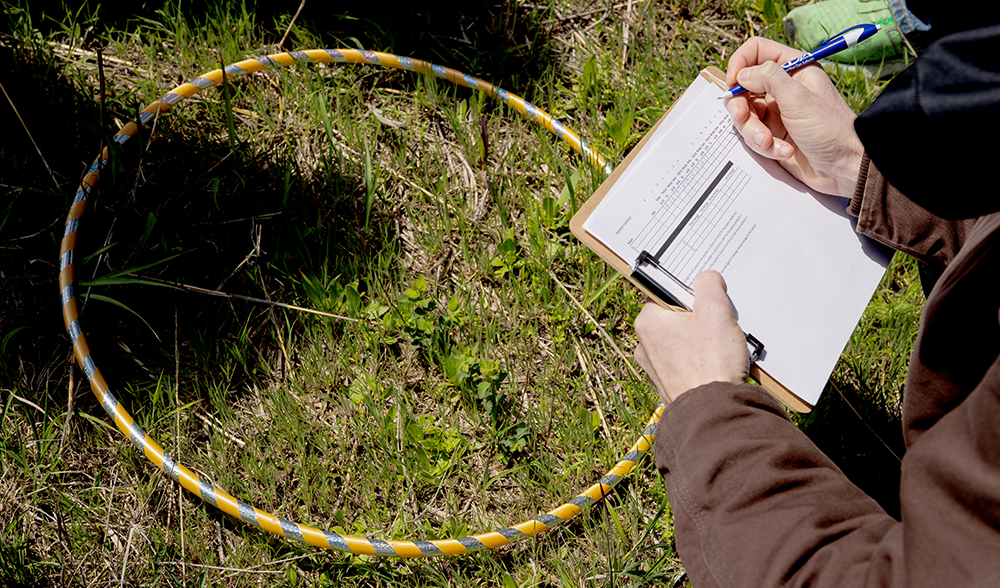
What and how to monitor
Decide how you want to mark your monitoring location. You may set a t-post, drop a GPS pin on your smartphone, or use a landmark as your reference point – say, start at the gate and step off 100 paces due north to arrive at your monitoring point.
Determine what you want to monitor at that location. The possibilities are endless, but Johnson suggests keeping it realistic and practical as to how much data you’ll collect and put to good use.
Measuring bare ground is an easy place to start, and it’s one pasture characteristic you might be able to make a measurable impact on within one growing season. A simple way to measure bare ground is the step method. Take 10 steps or 100 steps (these numbers make the math easy), and record if your foot is on covered soil or bare ground at each step. Then some simple math gives you the percentage of bare ground.
Other common measurements to make and record include:
- plant species diversity
- soil test results from soil samples
- soil compaction or soil structure
- soil color
- animal diversity
- root depth
- brush encroachment.
Several smartphone applications can help identify plants at your monitoring location or evaluate soil coverage, but even just a shovel to look at soil and root characteristics is a good place to start. For larger landscape monitoring, such as evaluating brush encroachment over time, consider standing at your monitoring point and taking a photo toward the horizon in each cardinal direction, or capture drone footage or satellite imagery from the same height and location time after time.
Next, determine your recording method. It may simply be a notebook where you record observations and insert any data from testing results. Some ranchers find recording data points or notations on a calendar or day planner convenient, while more visual learners might choose to take photos on their cell phone and either file them into labeled folders or print the photos and insert them into the paper records.
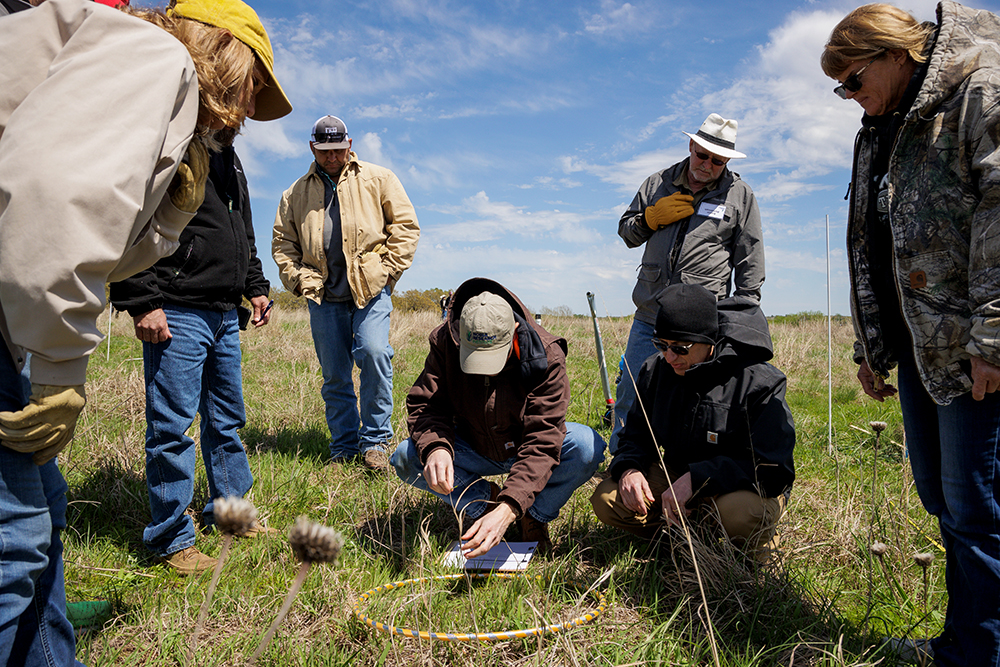
Using the information you gather
Whatever you choose to monitor, use the information you gather as a place to start asking yourself, “If my overall goal is to improve my resources, how can I follow the soil health principles to get there?”
Johnson says that’s one of the key questions he and other facilitators recommend that attendees at the Noble Land Essentials course ask themselves and apply to their management. Those who attend the course also gain access to Noble’s exclusive soil health progress tracker, an Excel spreadsheet designed to help organize monitoring data.
The measurements listed above may be observations otherwise easily overlooked in the course of the daily ranching rush and to-do list.
“The fact that we’re out there monitoring, observing, intentionally thinking about these things is so powerful,” Johnson says. “It doesn’t have to be an overly scientific process. Whatever you choose to do has to be simple and repeatable, something you’ll stick with and actually do.”
The monitoring data becomes part of your land management legacy, leaving a record from which future generations can learn. In a business where many factors are beyond your control, monitoring may add a much-needed sense of accomplishment as you branch out and try new management techniques, too.
“There is that little dopamine hit that comes with achieving a goal, having it in black and white, on paper, that says, ‘Here’s where we started, and here’s where we’ve gone, and I know for sure I’m making progress,’” Johnson says. “That encourages us to keep going.”

